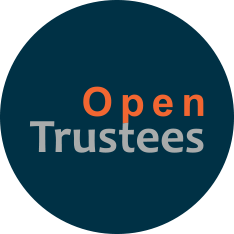Pensions Regulator consults on clearer framework for DB funding
Hot on the heels of the scheme funding provisions in the Pension Schemes Bill, the Pensions Regulator has started to consult on changes to the scheme funding regime. This consultation will be of interest to the sponsors and trustees of all UK defined benefit schemes.
On 3 March 2020, the Pensions Regulator (TPR) launched the first of two consultations on the funding of defined benefit (DB) pension schemes.
The first consultation complements the scheme funding changes proposed in the Pension Schemes Bill. In it, TPR seeks the pensions industry’s views on a “new proposed regulatory approach” to scheme funding. After the regulator has considered the responses, it will launch a second consultation on a new draft funding code and related guidelines.
Fast track or bespoke?
One of the key points to note is that TPR is suggesting a twin-track approach to scheme funding, with schemes having the choice between a fast-track or bespoke route.
Schemes using the fast-track route will need to meet specific guidelines on funding target, technical provisions “including discount rates and (possibly) other assumptions”, recovery plan length and structure, investment risk and (for schemes that are still open to future accrual) future service contribution rates. Schemes that use and meet all of the requirements of the fast-track route can expect “minimum regulatory involvement” on scheme funding. The bespoke route will be available to trustees and employers who cannot or do not want to use the fast-track approach, because they need or want more freedom to take account of circumstances specific to the scheme and employer (including real affordability constraints). Schemes using the bespoke route will need to provide more explanation and evidence and may experience “higher regulatory involvement”, but TPR confirms that it is not a “bad or second-best option”.
It will be possible to switch between the two routes (that is, use one route for one valuation and the other at the next) and TPR intends to consult on the final fast-track guidelines as part of its second scheme funding consultation.
One of the ideas behind the guidelines for the fast track route is to make TPR’s expectations on scheme funding clearer, which will in turn make it easier for the regulator to step in and to prove non-compliance (for example with the ‘prudence’ and ‘appropriateness’ requirements of the scheme funding legislation) if it needs to.
Eight overarching principles
The consultation also suggests a set of eight central and overarching principles for all scheme valuations as follows:
- Compliance and evidence. For example, TPR will “expect trustees and employers to be able to understand their scheme-specific funding and investment risks and objectively evidence how these risks have been assessed as remote or minimal or can otherwise be properly managed (i.e. supported and/or mitigated)”
- Long-term objective (known in the Pension Schemes Bill as the funding and investment strategy). TPR will expect that, by the time schemes are “significantly mature” they will have “a low level of dependency on the employer and be invested with high resilience to risk”. TPR suggests that the low-dependency discount rate should “be somewhere in the range of Gilts +0.5% p.a. to Gilts +0.25% p.a., and significant maturity be 15-20 years from now for a scheme of average maturity”
- Journey plans and technical provisions. Trustees will need to set a journey plan to reach their long-term objective. They will need to plan for “investment risk to decrease as their scheme matures and reaches low dependency” and set technical provisions which have a “clear and explicit link” to the long-term objective and converge to it over time
- Scheme investments. For example, investment strategy and asset allocation will need to be in line with a scheme’s technical provisions and recovery plan and, by the time a scheme reaches “significant maturity”, TPR will expect its asset allocation to have “high resilience to risk, a high level of liquidity and a high average credit quality”
- Reliance on employer covenant. Schemes with stronger employer covenants will be able to “take more risk and assume higher returns”, but trustees “should place a reducing level of reliance on the direct employer covenant beyond the period for which there is good visibility (subject to a new assessment at each valuation).” Trustees who want to place full reliance on the employer covenant beyond the three to five years being considered for fast track might need to justify their decision via the bespoke framework
- Reliance on additional support. Schemes will be able to take account of support (for example, contingent assets) in a valuation provided that it “provides sufficient support for the risk(s) being run, is appropriately valued and is legally enforceable and realisable at its necessary value when required”
- Appropriate recovery plan. Any technical provisions deficit should be recovered “as soon as affordability allows, while minimising any adverse impact on sustainable growth of the employer”. As such, TPR will still generally expect schemes with stronger employers to have shorter recovery plans and “[i]f an appropriately short [recovery plan] cannot be agreed, we would expect affordability constraints to be evidenced, and for trustees to seek suitable and realisable mitigations”
- Open schemes. “Members’ accrued benefits in open schemes should have the same level of security as in closed schemes” and so should have a long-term objective of “low dependency funding at significant maturity”.
Timings
This consultation will close on 2 June 2020. The second consultation (on the new draft funding code and related guidelines) is due to be launched at the end of this year. The new code and related legislation are currently expected to come into force at the end of 2021.
Open Trustees’ comment
We believe that this consultation heralds important changes to the DB scheme funding regime. We shall be discussing the consultation with the sponsors of our schemes and our actuarial advisers.


